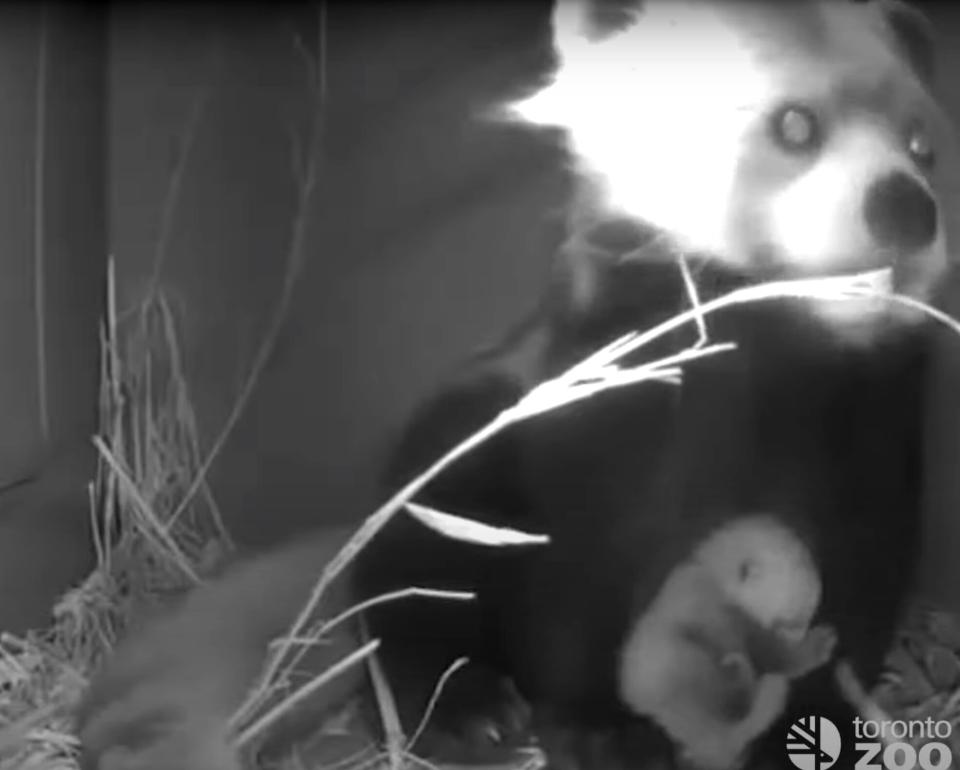Toronto Zoo Introduces Newborn Endangered Red Panda Cub, the Zoo's Third in More Than 25 Years
The Toronto Zoo is celebrating a new endangered addition.
A red panda cub was born Wednesday, July 13, from mother Paprika, 4, and father Suva, 5, becoming only the third of the species to be born at the zoo in more than 25 years, according to a press release from the Toronto Zoo.
"We are so excited to welcome this baby red panda to the Toronto Zoo family," Toronto Zoo CEO Dolf DeJong said in a statement. "Red pandas are an endangered species due to illegal hunting and habitat loss, so contributing to sustaining their managed populations in AZA [Association of Zoos and Aquariums] accredited zoos is not only a success for your zoo, but also helps to educate our guests about the conservation efforts of this extraordinary species."
RELATED: Double the Joy! Two Red Panda Cubs Born at Michigan's Potter Park Zoo: 'We are All Thrilled'
The male cub, whose name has not yet been shared, weighed in at 221 grams (7.8 ounces) and is currently bonding with his mother in their nest box until he's grown enough to be on display to the public.

Toronto Zoo
Paprika was "very calm" while she was briefly separated from her baby boy during his vet visit, stretching out and grooming herself. She's since been resting and bathing the cub in their nest box on the zoo's webcam.
She was brought to Toronto Zoo in November 2021 to potentially mate with Suva, the zoo's male red panda, as part of the AZA's red panda Species Survival Plan. After the pair was introduced on New Year's Eve, the zoo's remote cameras captured some breeding attempts in late January.
RELATED VIDEO: Red Panda Baby Adorably Dominates His First Health Checkup
The International Union for Conservation of Nature classified red pandas as endangered in April 2015, adding the species to their Red List of Threatened Species. The species' current global population is estimated to be less than 10,000, with 50 percent of the species' habitat in the Eastern Himalayas.

